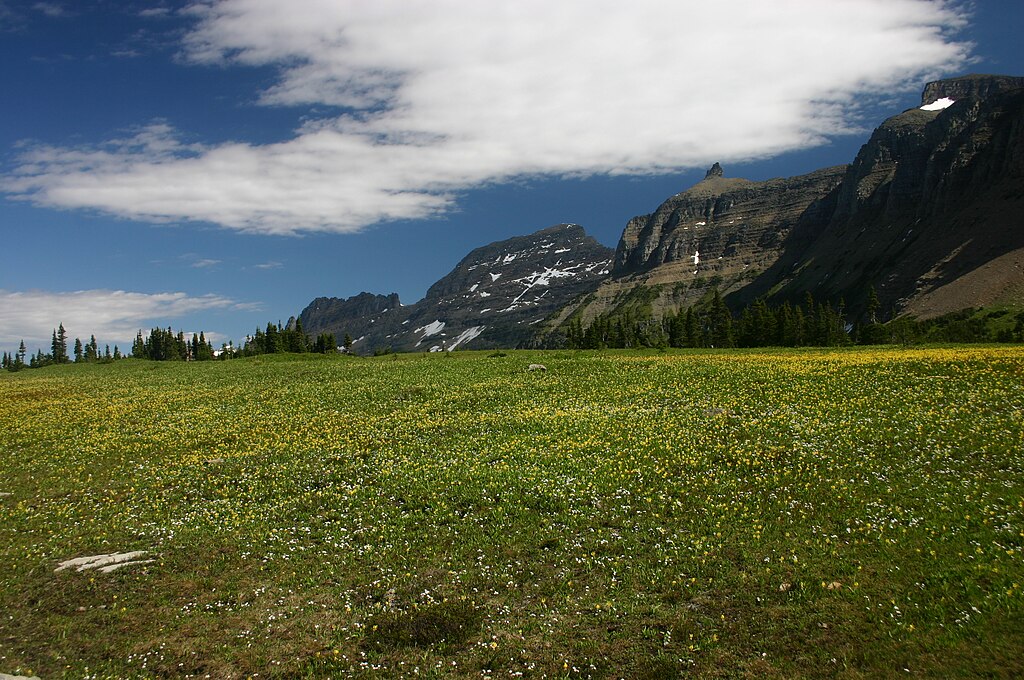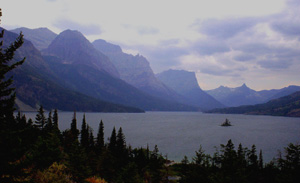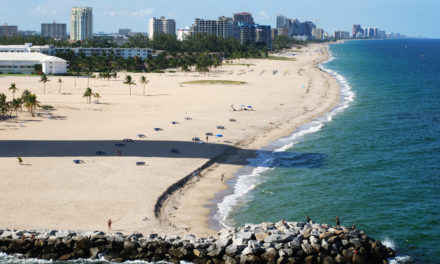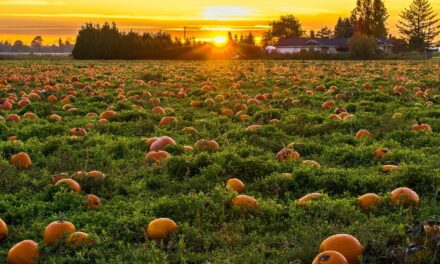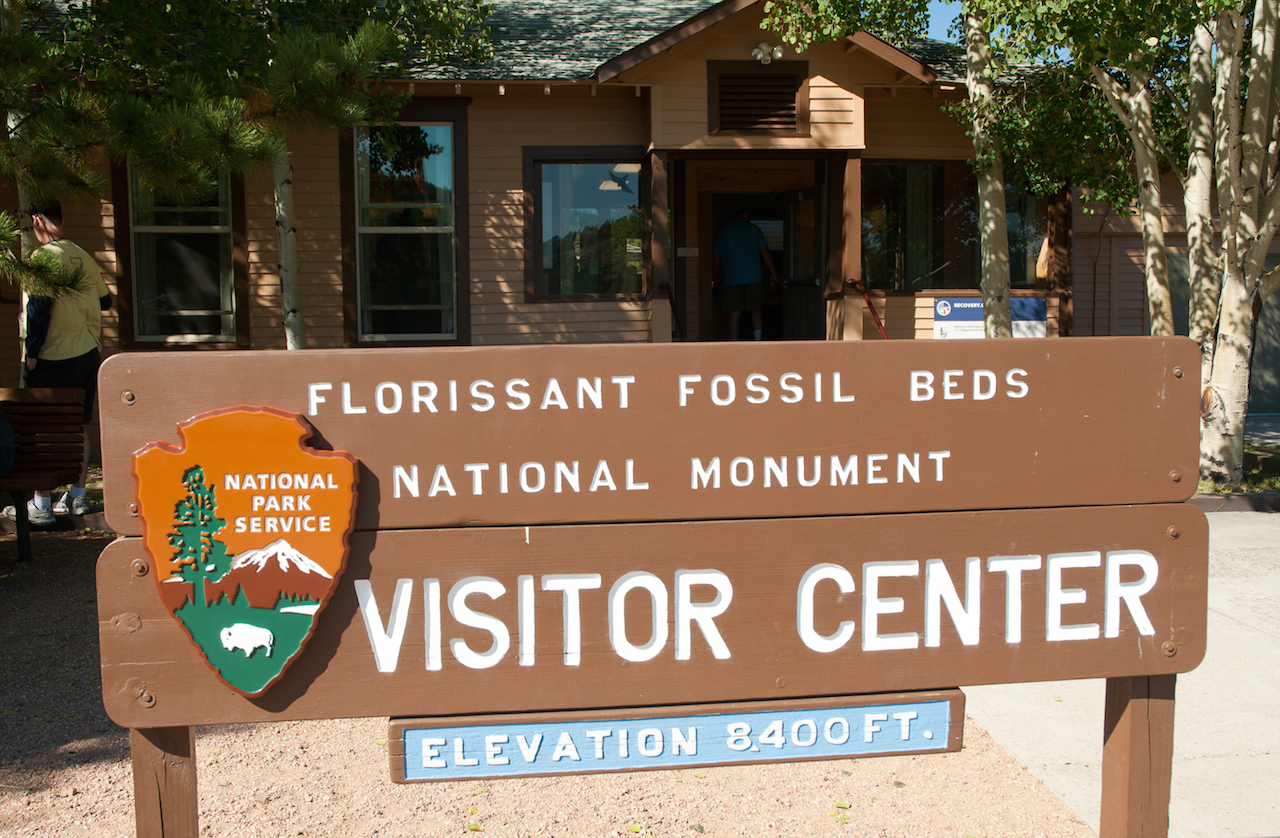When you’re stressed, the best type of vacation will allow you to get away from it all, enjoy the peace and quiet, and breathe fresh air. Sometimes that means finding a place without the hustle and bustle of people everywhere, and we know just the places to visit! This summer, why not try visiting one of the least crowded states in America? These destinations offer the best in outdoor adventure, wildlife and wilderness, and much more!
See how the top 5 least populated states can help you escape on your next vacation.
1. Alaska
It comes as no surprise that Alaska is the U.S. state with the fewest number of people per square mile. Alaska offers an incredible frontier of new experiences, and is the ideal destination for those who love outdoor adventures.

© State of Alaska
Alaska is home to eight National Parks, each offering different opportunities for wildlife viewing, camping, hiking, kayaking, show shoeing and more. Two of the most visited parks are Denali, which is home to Mount McKinley, and Glacier Bay, which is a frequent stop on many cruise itineraries.
Top Alaskan cities to visit include Juneau, Anchorage and Fairbanks. If you’re interested in an interesting town with history and culture, head to Juneau. This capital city of Alaska is situated next to Glacier Bay National Park, so whale watching tours are a top attraction. Anchorage is the largest city in Alaska, and offers a surprising big-city feel. Here you’ll find attractions, dining, biking and more. Anchorage is a great starting point for trips to destinations in Northern Alaska. Fairbanks is the second-largest city in Alaska and offers spectacular views of the Northern Lights, dogsledding, art galleries and more.
When you travel to Alaska, you can opt for a road trip, a train ride, air travel or a cruise. Each offers a completely different perspective on this unique state.

Via YellowstoneNPS on Flickr
2. Wyoming
Wyoming is home to the iconic American West. Here you’ll find real American Cowboys; in fact, the state symbol of Wyoming is the “Bucking Horse & Rider” and the state sport is the rodeo!

Via YellowstoneNPS on Flickr
Wyoming offers an ideal place to get away from it all and let loose a bit. We suggest taking a horseback riding tour near the Grand Tetons or attending a rodeo in the capital city of Cheyenne. The state is also home to Devils Tower National Monument and Yellowstone National Park – great places to see the incredible Wyoming landscape or famous wild bison. Yellowstone’s Grand Prismatic Spring (pictured) is even more incredible in person than in photos.
If you love outdoor activities, you’ll love Wyoming any time of year. This second-least populated state is great for fishing, off-roading, skiing, snowmobiling, whitewater rafting and more.
When you step into the grasslands of Wyoming, you’ll find the peace, quiet and beauty you’re searching for.
3. Montana
Step out of bounds and into big sky country in Montana. Between the friendly locals, panoramic views, interesting towns, and unbelievable landscape, you’ll leave your worries far behind when you travel to Montana.
We recommend visiting Glacier National Park. For the adventurous, more than 700 miles of trails await your arrival! The Going-To-The-Sun scenic drive winds through the park’s alpine forests and along the mountain range. Stop at St. Mary Lake for awe-inspiring views. We also suggest visiting Yellowstone National Park through the park’s north entrance in Montana, so you can drive through the Roosevelt Arch.
Beyond the national parks, there’s still much more to see and do in Montana. You could drive the awesome Dinosaur Trail to see fossils; take a dip in a hot spring; visit a real-life dude ranch; go camping, biking or whitewater rafting; visit local farmers markets; explore art galleries and museums; and much more!
Montana offers something for everyone.

Photo by North Dakota Tourism
4. North Dakota
North Dakota invites you to experience this legendary state for yourself.

Photo by North Dakota Tourism
In addition to the beautiful landscape, thrilling adventures and small historic towns in North Dakota, you’ll also find plenty of cities featuring museums, golf courses, wineries, shopping areas and restaurants. This state offers an awesome mix of the great outdoors and modern attractions.
You’re likely to see wild bison roaming the grasslands of North Dakota, but it’s safest to take your next family photo with the Largest Buffalo in the U.S. when you visit Jamestown, ND.
Follow in the footsteps of Lewis and Clark along their historic trail. Or, you could plan a road trip along I-94 from Fargo through Bismark and Dickinson, all the way to the Little Missouri National Grassland and Theodore Roosevelt National Park. Theodore Roosevelt was so inspired by the prairie, badlands and wildlife of the area that he implemented the national parks program.
Don’t miss a drive on the famous Enchanted Highway, which features giant metal roadside sculptures, including favorites like a family of pheasants, farmers, leaping elk, and more.
Find even more to explore in North & South Dakota.

Photo via South Dakota Tourism
5. South Dakota
Why wouldn’t you want to visit the most-populated least-populated state in America? South Dakota has so much to offer travelers of all ages and interests.

Photo via South Dakota Tourism
You’ll be amazed that South Dakota is home to both the world’s largest mountain carving (Crazy Horse Memorial) and the world’s most famous mountain carving (Mount Rushmore).
Visit Badlands National Park and be amazed by the shapes and colors of the rock formations. You could even see wildlife like bison, deer, bighorn sheep and antelope. Or, take your exploration below ground in Wind Cave National Park, in the Black Hills of South Dakota.
There’s no shortage of adventure in South Dakota. If you’re interested in history and culture, drive the Native American Scenic Byway. For families, we recommend a tour in an authentic covered wagon, at the Ingalls Homestead, where the famous Little House on the Prairie story was conceived. Plus, you’ll find great opportunities for fishing, hiking, biking and camping throughout the state.
Where would you like to go to get away from it all? Tell us on Facebook or Twitter!
*This ranking is based on population density, not raw population data. Population density is calculated using the number of people per square mile.


